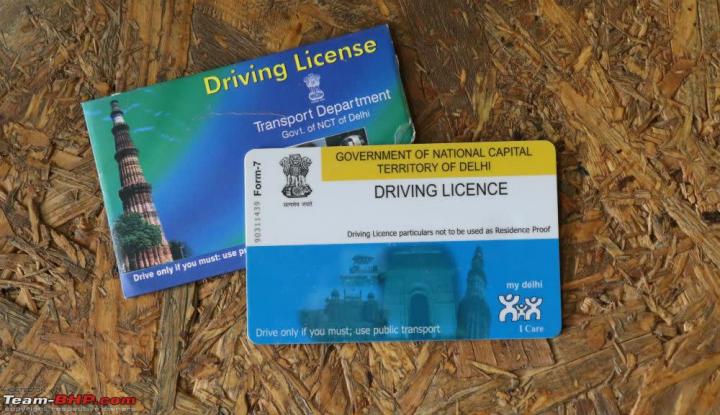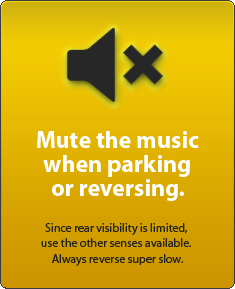News
Graduated Driver Licensing Program: What is it & will it work in India?
The World Health Organization (WHO) defines graduated licensing as "a stepped system. When all conditions have been met, a restricted license is issued.
BHPian SS-Traveller recently shared this with other enthusiasts.
What is the GDLS / GDLP / GLP?
The Graduated Licensing Program (GLP) or Graduated Driver Licensing Program (GDLP) is defined as a system that is designed to provide new drivers of motor vehicles with driving experience and skills gradually over time in low-risk environments. There are typically three steps or stages through which new drivers pass. They begin by acquiring a learner's permit, and progress to a restricted, probationary or provisional license, followed by receipt of a full driver's license.
Graduated drivers' licensing generally restricts nighttime, expressway, and unsupervised driving during the initial stages, but lifts these restrictions with time and further testing of the individual, eventually concluding with the individual attaining a full driver's license.
Acquiring a learner's permit typically requires a minimum age and passing vision and knowledge (written) tests. These tests usually assess the participant's knowledge of road signs and how to deal with hypothetical situations (e.g. junctions) while on the road. Parental or guardian permission may be required if below a specified age. Those who hold a learner's permit must generally drive under the supervision of a licensed driver that meets the requirements of a supervisor, not be affected by alcohol or other drugs, and there may be restrictions imposed on the maximum speed that a learner driver can drive the types of road that can be driven, and even on the use of mobile phones (cell phones). There may also be limits imposed on the number of passengers in the vehicle, and learner drivers may be required to be free of moving violations and at-fault accidents or crashes for a minimum period of time before moving to the next stage. In many jurisdictions, a learner driver is required to display an L sign clearly on the vehicle to indicate to other road users that training and supervised driving is being undertaken. Learner drivers may also be required to complete a logbook of their driving experience, which must be certified or countersigned by a supervising driver or driver trainer.
The transition from a learner license to an intermediate, provisional or probationary license typically requires a minimum age and usually requires the learner driver to pass an on-road driving test, although in some jurisdictions there may be alternative licensing paths offered involving a continuous process of competency-based training and assessment under the guidance and instruction of an accredited driver trainer.
Those who receive an intermediate, provisional or probationary license may drive without supervision, although driving at certain times (typically after midnight until around sunrise) and driving with passengers in the vehicle may require the presence of a supervising driver who is fully licensed. Drivers typically must remain free of moving violations and at-fault accidents for a specified period of time. In some places, drivers with these licenses must have no alcohol or other drugs in their blood while they are driving, and may be restricted to certain maximum speeds and from using mobile phones. In some jurisdictions, an intermediate, provisional or probationary driver is required to display a P sign on the outside of the vehicle to indicate to other road users and police their license status (and hence restrictions that may apply).
Receipt of a full driver's license typically requires a specific minimum age, and a minimum time period of driving experience, and may require the passing of a final road test of driving skills or the passing of a hazard perception test.
[Source]
The World Health Organization (WHO) defines graduated licensing as "a stepped system. When all conditions have been met, a restricted license is issued. These restrictions may pertain to zero tolerance around alcohol and drug use, limit the time of day one can drive, and limit the class of roads where one can drive. At the end of a set time period, one or more road tests must be passed. This must be completed within a predetermined period of time."
Why is GDLS required?
Research has shown that young drivers have higher crash risks due to:
- the nature of adolescent development, which affects a young person’s cognitive and perceptual skills;
- lack of driving experience;
- poor ability to anticipate, perceive, identify and, therefore, react to hazards;
- failure to recognize and assess risk as well as a propensity to take intentional risks;
- propensity to be over-confident and overestimate their driving ability.
Based on the available research and GDLS evaluations, the key elements of an effective GDLS have been identified. These include:
- Licensing age, whereby the older a young person is when they are licensed the safer they are;
- Having high levels of supervised driving experience in a range of conditions prior to driving solo;
- Effective testing procedures that can discriminate between more and less safe applicants to only licence those demonstrating safe behaviours and abilities;
- Risk reduction measures to try to limit the negative impact of the increased risks to newly licensed drivers that are associated with alcohol, distraction, late night driving and driving with multiple peer-aged passengers;
- Behaviour control measures, that aim to deter provisional drivers from illegal and high-risk behaviours (in particular speeding) by having lower tolerances and more penalties for those that commit offences;
- Licensing access support measures to ensure that all members of the community can safely become licensed.
[Source]
Why does India need GDLS?
Minister of Road Transport and Highways, Mr Nitin Gadkari, has stated that by 2025, the government is planning to reduce the number of deaths (in road accidents) to 50 per cent and to zero by 2030. The Stockholm Declaration, Gadkari said, on road safety in Sweden held in February last year (2020) called for a reduction in road accidents by 50 per cent in 2030. However, Gadkari stated that India would achieve this by 2025.[Source]
Every three and a half minutes, by the Indian government’s reckoning, one of its citizens is killed in a traffic accident. That adds up to 150,000 people a year. But in all likelihood, the carnage is much worse: the World Health Organisation (WHO) thinks there are 300,000 traffic deaths in India a year—more than there are people in Barbados. That is not just a function of India’s enormous population. China has roughly the same number of people, but its authorities count just 58,000 fatalities each year. In fact, India, home to just 10% of the world’s registered vehicles, accounts for 22% of traffic deaths, the World Bank estimates, using WHO data. It is a daily massacre, taking place in full public view but provoking little consternation.
It is no secret that India’s roads are mayhem. Drivers ignore lane markings; traffic lights are considered merely advisory; pedestrians weave through fast-moving traffic and the main safety measure is the unremitting blasting of the horn. Nor is it just cars. Overloaded lorries, rickety auto-rickshaws, pootling scooters and roaring motorcycles all jostle for space, as do various forms of livestock. On many city streets, vendors eat up half the road space while on some older highways it is not uncommon for people to drive on the wrong side of the road.
The chaos reflects a structural problem. In the poorest countries, there are few vehicles, which move slowly on bad roads. That means relatively few deaths relative to population, even though safety standards may be low. Rich places can afford to invest in safety and have the administrative capacity to enforce strict road rules, with well-equipped (and well-paid) police and the latest technology. Poor but fast-growing countries, in contrast, have lots of vehicles, and even some decent roads, but do not devote much money or attention to safety. It is in such places where traffic fatalities are highest.
The lack of investment in safety has three main aspects. The first is the basic infrastructure of roads and cars. Many vehicles are old and lack essentials such as seatbelts, much fewer airbags. Lots of roads do not have proper markings or crash barriers. Pavements, to keep pedestrians away from traffic, are few and far between.
The “fundamental problem”, says Madhav Pai of the World Resources Institute, an American research group, is that the design of roads in many poor countries is modelled on the rich world, where cars and lorries constitute the vast majority of traffic. But in India, motorcycles and scooters account for 70% of vehicles in many cities. They are 30 times more likely to end up in an accident than a car. Yet Indian roads make no effort to accommodate two-wheelers, for example by designating separate lanes for them.
A second failing is an education. A survey conducted in 2017 suggested that six in ten Indian drivers did not take a driving test to obtain their licence. It has since become more difficult to pay off transport authorities, but that still leaves millions of drivers who got their papers through bribery. In any case, driving tests are often a charade. Worse still, 37% of truck drivers, who are supposed to have specialised skills to pilot their hulking vehicles, admit they had no formal training before getting a licence.[Source]
How should a GDLP format work in India?
Each applicant for a new driver's license must undergo a 3-step testing procedure before receiving their full driver's license, i.e.
Step 1: Apply for a Learner's License --> Test 1 (Road signs and Computerized Hazard Perception test)
V
Drive under supervision while displaying a red L plate for at least 6 months --> Test 2 (Basic Automated Driving Skills Test)
V
Drive unsupervised while displaying a red P (Provisional / Probationary) plate for at least 12 months, but with restrictions related to vehicle engine power, time of the day, type of road, zero tolerance for DUI & traffic violations --> Test 3 (Extended Road Test for at least 60 minutes with zero violations)
V
Receive a full driver's license with no restrictions.
For each traffic violation, while driving with the L or P plates, the next test should be delayed by 3 months. More than 3 violations should lead to cancellation of the Provisional / Probationary License and reversion to L plates.
Who in India should be placed under the Graduated Driver Licensing Program?
- All new applicants for a Learner's License (anyone above the age of 18 years, who has never held a driver's license in any country before);
- All driving license holders under the age of 25 years with driving licenses issued less than 1 year ago, should be reverted to P (Provisional / Probationary) plates for a period of 6 months, and undergo Test 3 (Extended Road Test for at least 60 minutes with zero violations) before securing their unrestricted DL;
- All driving license holders with more than 3 traffic violations within a 12-month period should be reverted to P (Provisional / Probationary) plates for a period of 6 months, and undergo Test 3 (Extended Road Test for at least 60 minutes with zero violations) again.
Here's what BHPian Thad E Ginathom had to say on the matter:
I voted yes, because, in theory, it is a very good idea.
In practice, though, it won't work, because drivers are not willing. And police will not be able to enforce.
Here's what BHPian nagr22 had to say on the matter:
Voted No. We have enough traffic rules in India but consistent enforcement is missing. Only minor violations like helmets and pollution certificates are enforced but even here the motive is for the cop to mint as much money as possible and not to improve road safety or bring down pollution.
Adding another set of rules/processes is not going to help when the next generation is growing up watching their parents break the rules left right and centre with no consequences. I have given up my hopes to see a civilized road sense in our country in my lifetime but I will be glad to be proven wrong.
Here's what BHPian Samurai had to say on the matter:
I voted NO. It will not help, there is simply no enforcement of existing rules. When my son underwent a DL test recently, I realised it has become much worse than 30 years ago when I underwent testing.
Even driving schools have stopped teaching any driving. They go through the motion and teach absolutely nothing. I had to repeat my son's driving classes once again with another experienced teacher who came highly recommended by a friend.
In India, people learn to drive after getting the DL, on their own.
Here's what BHPian Kosfactor had to say on the matter:
There are experienced drivers who have driven just under 10,000 km in 5 or even 10 years - they are as good as this teen with a learner's license. I don't think we need to complicate these things. Just make sure licensing authorities as well as motor driving schools are doing their job properly and that's about it.
The problem is some of these so-called developed countries have taken to motoring as an equivalent to having a washing machine or television at home, an essential that requires no particular interest or passion towards it, it's like how Motorcycling has succumbed to Activa, an involuntary action that somehow takes you from one place to another.
One of my driving instructors was a very old man, he was very particular about where your eyes, feet, and hands are at any point in time.
The fellow who was with me in the same vehicle used to get whacked on the head by the instructor for not having his feet in the brake pedal to anticipate the need for braking, following lanes, indicators and whatnot. These are the ways how they moulded the student's instincts because the undivided state road of KL is very narrow, which gives them an extra second of time to avoid an accident.
That old man did his job well, passionately. The inspector from RTO as well did his job damn well, he did not let through the ones who couldn't drive smoothly and followed all the rules of the road during a long enough road test.
Driving is more than a utilitarian task, the more involved you are in that craft, the better and safer you get.
It's a different matter altogether to debate whether as an art form driving requires a license at all?! Okay well, there are rules, so the license is certainly a good idea.
Check out BHPian comments for more insights and information.
















